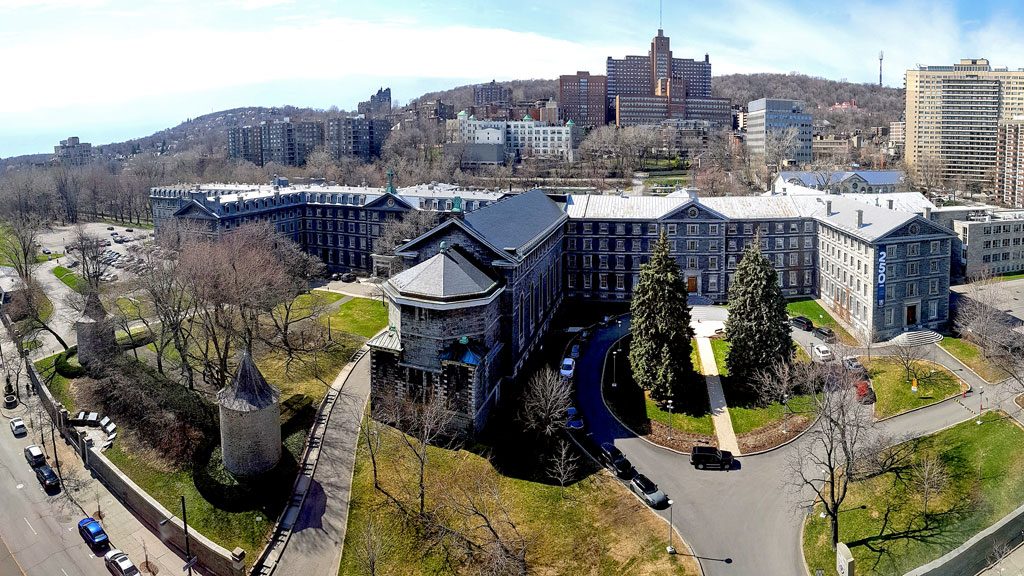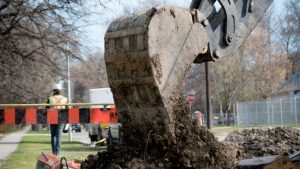An ambitious master plan for development of the historic Grand Seminaire de Montreal site — now named the Fort de la Montagne campus — has been unveiled by the Priests of Saint Sulpice of Montreal.
The long-term plan, devised by EVOQ Architecture, provides in part for enhancement of the 28-acre site and its heritage buildings as well as new construction.
The Sulpicians hope to collaborate on the execution of the master plan with the City of Montreal, the province’s Ministry of Culture and Communications and other stakeholders.
The downtown site is located north of Sherbrooke Street between Atwater Avenue and Cote des Neiges Road. Some of the buildings can be traced back to the 17th century.
Eric Stein, an associate at EVOQ, who acted as project manager on the master plan, said the proposed time frame for development is 50 years.
Eight concurrently running phases have been identified in the plan.
“To conserve the physical qualities of the site, very few new buildings are planned,” said Stein, who joined the architecture firm in 2001 and has been an associate since 2009.
A total of 11 structures on the site hold a heritage designation, said Stein, who brings to EVOQ’s heritage conservation team experience in institutional, commercial and residential projects.
Two of these structures, the remains of the towers of the Fort de la Montagne, are considered especially valuable, holding both provincial and federal designations.
The Grand Seminaire building itself, which is composed of five contiguous wings including a large chapel and ancient crypt, holds multiple designations with the Province of Quebec.
The seminary was built by the Sulpicians in the 1850s.
“The site itself holds significant archeological value and is protected by the city and the province,” Stein said. “Large portions of it cannot be built on.”
Stein said while the existing buildings on the site are generally in excellent condition, ongoing masonry and roofing work is planned over the next five years at the Grand Seminaire.
Restoration work was done recently to the chapel with a slate roof replacement, to the Vanier House with masonry work, and to the 18th century Seaforth wall.
“There are plans underway to rehabilitate and revitalize the crypt,” Stein said.
In terms of future development, the area at the north of the site is reserved for construction of a new elementary school and/or daycare facility. This involves both new construction and the rehabilitation of the historic boiler house.
Stein said the Commission Scolaire de Montreal has publicly expressed interest in the site. Discussions are ongoing.
In the summer of 2019, Centennial Academy and Centennial College, a school for students with learning disabilities, will be moving to the west wing of the Grand Seminaire, which will be rehabilitated.
A currently vacant area at the northeast section of the site has been reserved for future low-rise construction of educational or sports facilities.
“A substantial effort will be put into enhancing the quality of the archeologically rich and unique natural landscape,” Stein added.
To date, only short-term cost estimates have been prepared for development of the site.
A five-year plan of studies and interventions, renewable annually, was implemented in 2016. The target budget is an estimated $1.4 million a year.
EVOQ was retained by the Priests of Saint Sulpice of Montreal to develop the master plan in August 2017. Its 159-page report was issued in early June 2018.
“We are continuing our involvement with the ongoing five-year maintenance plan and advising the Sulpicians on matters of heritage conservation,” Stein said.
“Though we do not have a long-term mandate in this respect, we hope to pursue our role as advisers on the overall development of the site.”
The Sulpician priests have held a continuous presence on the site since 1675, when the Mission de la Montagne was founded.











Recent Comments
comments for this post are closed